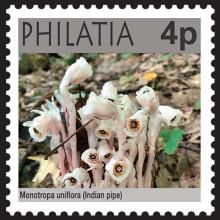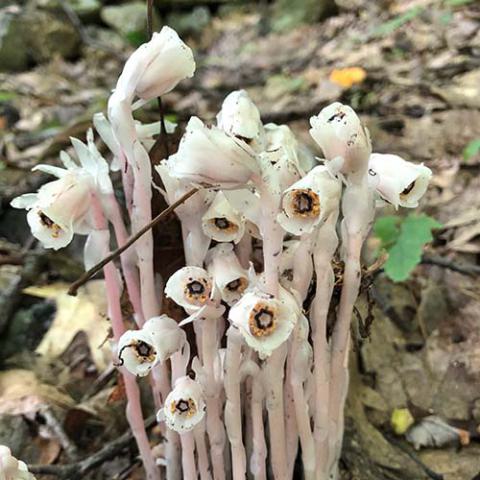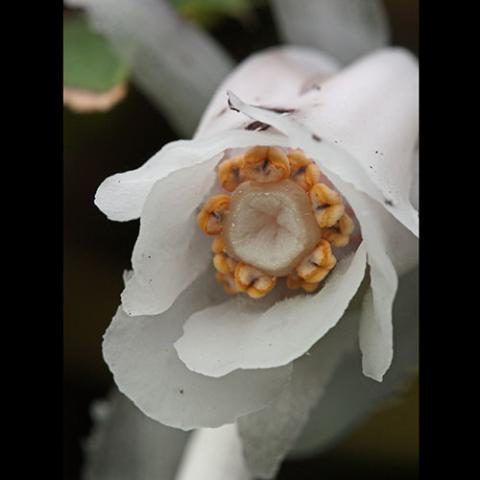NAME(S)
TAXONOMY
PLANTAE ID
THERAPEUTIC
Philatia
Issued:
Stamp:
Monotropa uniflora
Philatia
Issued:
Stamp:
Monotropa uniflora
Philatia
Issued:
Stamp:
Monotropa uniflora
Genus species (Plantae): Monotropa uniflora
Monotropa uniflora, also known as ghost plant, ghost pipe, or Indian pipe, is an herbaceous perennial plant native to temperate regions of Asia, North America, and northern South America, but with large gaps between areas. The plant is sometimes completely waxy white, but often has black flecks or pale pink coloration. Rare variants may have a deep red color. The name "Monotropa" is Greek for "one turn" and "uniflora" is Latin for "one flowered" as there is one sharply curved stem for each single flower.
Description
The stems reach heights of 5–30 cm (2–12 in), sheathed with highly reduced leaves 5–10 mm (3⁄16–3⁄8 in) long, best identified as scales or bracts. These structures are small, thin, and translucent; they do not have petioles but instead extend in a sheath-like manner out of the stem.
As its scientific name suggests, and unlike the related Monotropa hypopitys (but like the close relation Monotropastrum humile), the stems bear a single flower 10–20 mm (3⁄8–13⁄16 in) long, with 3–8 translucent petals, 10–12 stamens and a single pistil. It flowers from early summer to early autumn, often a few days after rainfall. The fruit, an oval capsule-like structure, enlarges and becomes upright when the seeds mature, at this point stem and capsule looking desiccated and dark brown or black.
The seeds of Monotropa uniflora are small, ranging between 0.6–0.8 mm (3⁄128–1⁄32 in) in length.
Unlike most plants, it is white and does not contain chlorophyll. Instead of generating food using the energy from sunlight, it is parasitic, and more specifically a mycoheterotroph. Its hosts are certain fungi that are mycorrhizal with trees, meaning it ultimately gets its food from photosynthetic trees. Since it is not dependent on sunlight to grow, it can grow in very dark environments as in the understory of dense forest. The complex relationship that allows this plant to grow also makes propagation difficult.
Taxonomy
It was formerly classified in the family Monotropaceae, but is now included within the Ericaceae. It is of ephemeral occurrence, depending on the right conditions (moisture after a dry period) to appear full grown within a couple of days.
Ecology
The flowers of Monotropa uniflora are visited by various bee and fly species, most commonly bumblebees. Bumblebees are an important pollen dispersal agent for the plant.
Like most mycoheterotrophic plants, Monotropa uniflora associates with a small range of fungal hosts, all of them members of Russulaceae.
It is often associated with beech trees.
Toxicity
The plant contains glycosides and may be toxic to humans.
Uses
In addition to various reported medical uses, the plant has been used as an anxiolytic in herbal medicine since the late 19th century.
Despite possibly being toxic, the entire plant can be cooked, which lends it an asparagus-like flavor.
Reference: Wikipedia,pfaf.org
Photos: Walter Siegmund,P. Needle



